Covered outdoor spaces
The use of verandas and other covered outdoor space attached directly to a building provide a transition space between inside and outside, while providing a sheltered and shaded outdoor play area. It is important for children to experience all weathers. They can be encouraged to play in the rain or in wind. However, at times when rain is excessive or it is very windy, a covered area ensures children can experience climate conditions without being out in it. In time of excessive heat a covered area provides shade for children so they have fresh air without exposure to dangerous levels of sunlight. In Ireland, the UV is strongest (UV index above 3) from April to September. Children need sun protection between 11.00am and 3.00pm. In the ELC setting covered areas provide intermediary space and a sense of enclosure and protection for all children. This is helpful for a child who may be anxious about going outside, as it allows the child to preview the outdoors or an outdoor activity, as a step towards going fully outside. It also provides a changing, drying, and storage area for rain gear, wellingtons, and other outdoor apparel.
In line with the Department of Health’s 2019 Skin Cancer Prevention Plan the provision of shade is the best way to provide maximum protection against UV exposure for children and staff.
There are many types of built structures that can provide effective shade, including:
- permanent structures (pergolas and verandas);
- demountable shade (marquees and tents);
- adjustable systems (awnings);
- shade sails.
Materials used can range from glass, fibreglass, canvas and polyvinyl chloride (PVC) to steel sheeting. If choosing a sail type canopy choose a dense weave cloth that states the level of UV protection it provides, either as an Ultraviolet Protection Factor rating (UPF) or percentage figure. Shade structures should allow adults to view and access the children’s play areas. A head clearance of about two metres is recommended for shade structures. It would be desirable to design shade structures that offer protection from both UV radiation and rain. Natural shade from trees and shrubs can also provide an important element of shade in an outdoor play space.
Covered outdoor spaces can take many forms and provide different levels of protection that vary from expansive covered areas, to cloister style covered areas that enclose a central outdoor space and provide a continuous perimeter walkway, to lean-to style covered areas attached to one exterior wall of the setting. In all cases it is vital to provide direct and level access between the covered area and the internal space that it serves.
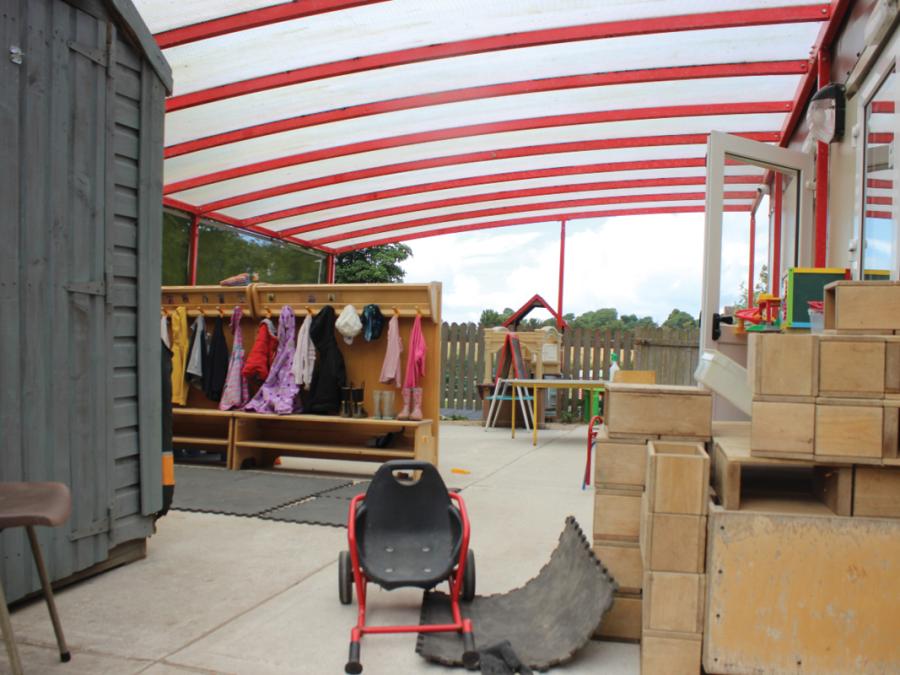
50. Aghada Community Preschool, Aghada, County Cork
Aghada Community Preschool, Aghada, County Cork.
Design features
- Covered outdoor area providing spacious sheltered play.
- Covered area provides storage and drying space for outdoor clothing.

“I think every age group is considered, both in the indoor and outdoor areas. There is something for them all to do, especially outdoor. Kids get to be kids and use their imagination.”
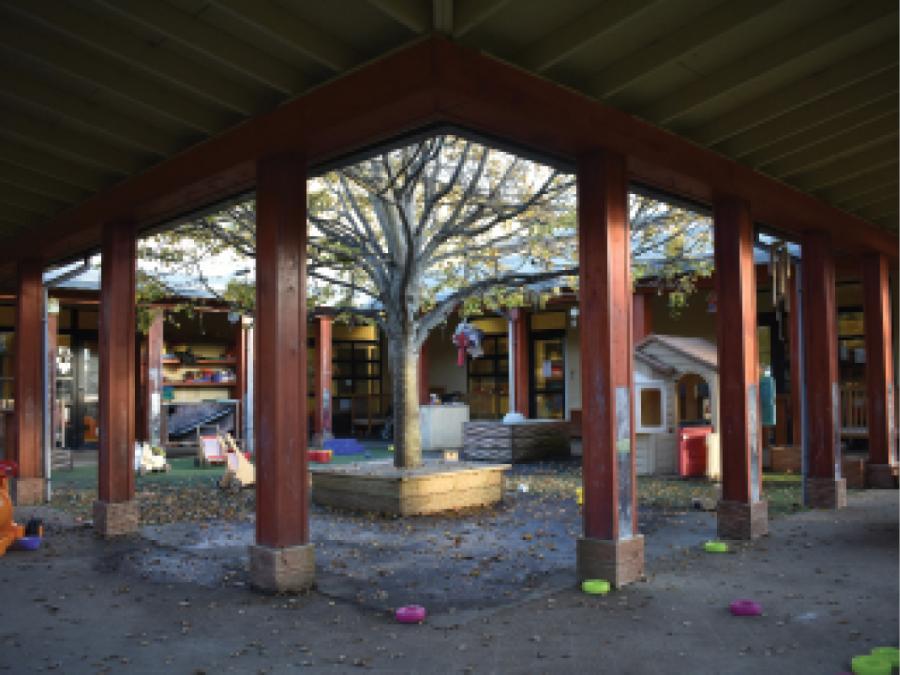
51. Tigers Childcare, Blanchardstown, Dublin
Tigers Childcare, Blanchardstown, Dublin.
Design features
- Cloister style covered outdoor area providing a continuous perimeter walk.
- Central open area providing contact with nature and the elements.
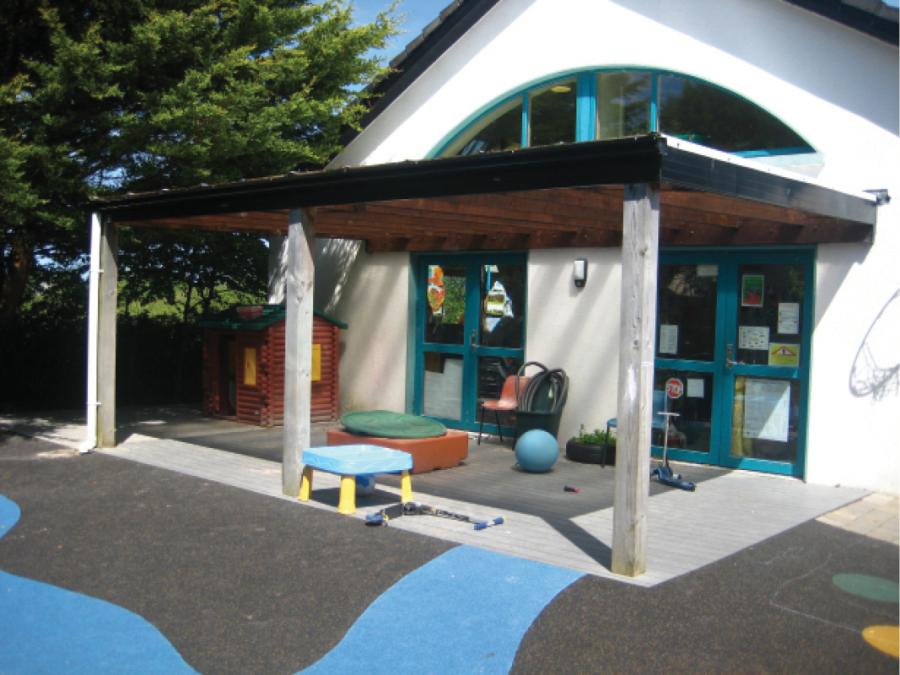
52. Ballindereen Community Childcare and Education Centre, Ballinderreen, County Galway
Ballindereen Community Childcare and Education Centre, Ballinderreen, County Galway.
Design features
- Canopy outside the playroom provides a transitional space where sand and water play can take place, as well as providing shelter and shade.
Covered outdoor areas can also take the form of freestanding structures such as sheds or garages and these can provide space for play, social activities, or outdoor learning. They may also have a more functional role as drying or storage space.
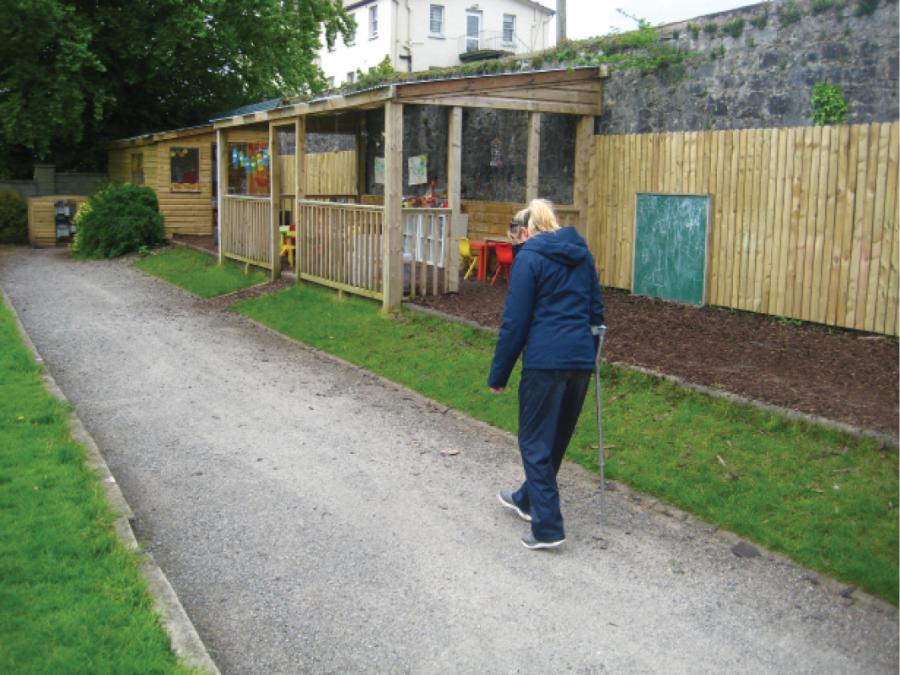
53. Totally Kids Pre-school, Tipperary Town, County Tipperary
Totally Kids Pre-school, Tipperary Town, County Tipperary.
Design features
- Standalone covered outdoor spaces not directly attached to a setting building.
- Level and wide footpath providing access for a staff member who through injury is temporarily using a crutch.
Design tip
- Level access or a ramp up to the covered area would provide a more accessible and usable environment for all users.
- Painting the shelter in a bright colour would make it stand out more from the fence.
Universal Design Guidance
- Provide covered outdoor spaces directly adjacent to the building and ensure direct level threshold access.
- Ensure covered outdoor spaces are wide enough to facilitate people using mobility aids.
- Handrails and grabrails within these spaces will provide additional support for staff or children who need it.
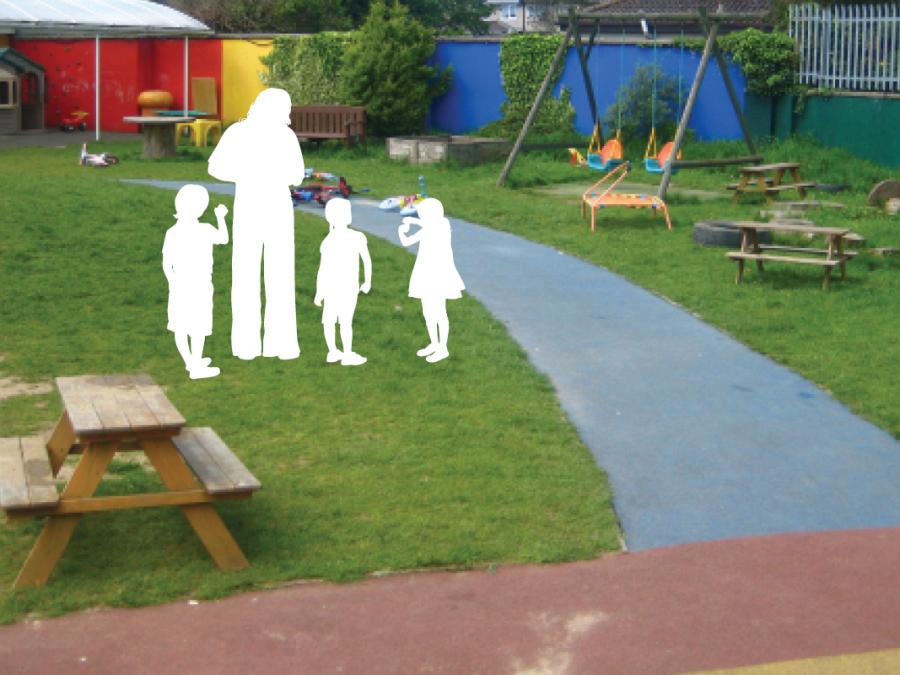
54. Northside Family Resource Centre, Ballynanty, Limerick City
Northside Family Resource Centre, Ballynanty, Limerick City.
Design features
- Choice of ground finishes providing grass and mud while also providing an accessible path.
- Covered outdoor area providing shade and shelter.
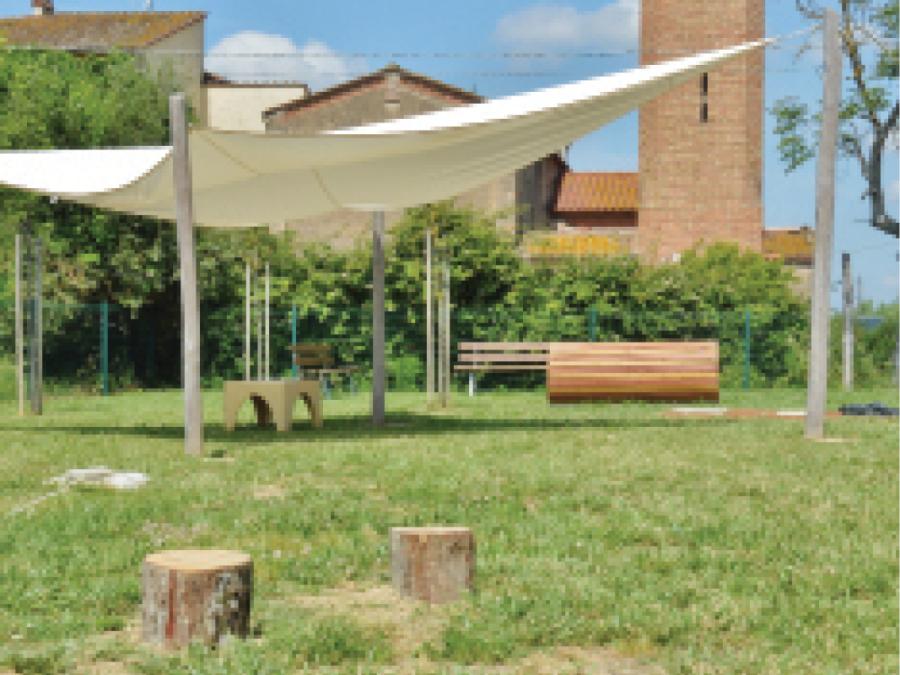
55. Asilo Nido La Chiocciola, San Miniato, Italy
Asilo Nido La Chiocciola, San Miniato, Italy.
Design features
- Between April and September, children’s skin needs protection from UV radiation from the sun. Shade must be provided in open areas. A sail type canopy provides shade and allows a breeze.




